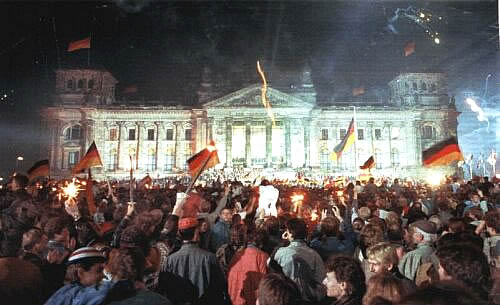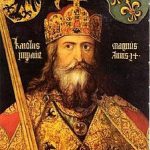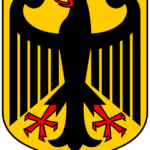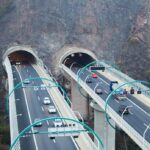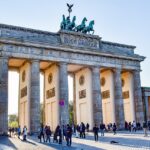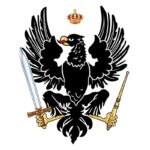On October 3, Germany celebrates its Unification Day (Tag der Deutschen Einheit). This day back in 1990 brought a happy and a very significant event on the world political scene. The symbol of the Cold War – the Berlin Wall – was torn down, and East Germans could freely face the world.
To have a better understanding of what actually happened in 1990, one should take a brief trip back into German history, and wind the clock about half a century ago…
…After the defeat of Germany in WWII (1945), it got under the influence of four powers – the Soviet Union, the USA, Great Britain and France. Geographically, Germany and its capital – Berlin – were divided into four sectors, each dominated by one of the victors. Specifically, the Russians got almost half of Berlin which from then on was called East Berlin, and the Allies shared the other half – West Berlin. From 1949 Germany stopped being a great united power created by Bismarck, but transformed into two different countries with different aims and ways of life – West Germany (FRG) with its capital in Bonn, and East Germany (GDR) with the capital in East Berlin. Needless to say that the economical and political situation in both Germanys differed dramatically.
While West Berlin took the shape and gloss of the best American cities, East Berlin became a reflection of Moscow. The Soviet Union put all its efforts into recovery after the horrible destruction caused by WWII. The stores could offer but a very scarce choice of products, and ordinary people were close to poverty in the first post-war decades. The situation was the same in East Germany. Controlled by the Soviet Union, it presented a direct opposite to the rich and prosperous West Germany.
As most East Germans had relatives and friends in the western part, they saw the striking difference in the streets, in the stores, in the houses, and it was natural that they also wanted to live like their well-to-do relatives. It was in late 1950s that the mass exodus of East Germans to West Germany began. A few thousands people left East Germany daily. There were many qualified specialists and scientists among the refugees. East Germany couldn’t afford such a brain flow. On the other hand, they just couldn’t stop the people! Finally, the problem was solved: on a Sunday morning of August 13, 1961, the works on the Wall construction began.
The works started under the leadership of Erich Honecker. East Berlin was blocked off West Berlin by barbed wire, barricades and antitank obstacles. In a few days the concrete 4-meter wall replaced the temporary barriers. According to the statistics, the length of the border between West Germany and East Germany was 166 km, and the Wall stood along this border with the full length of 107 km. The “wall-less” part of the border was full of various barriers. East Berliners were not allowed to enter the Western zone, and vice versa. The border area presented a very severe and multi-level obstacle:
– the Wall itself which was made up of concrete segments usually with a concrete tube on top of it;
– illuminated control area (also called death area), and anyone who got into this area without permission was shot;
– trench preventing vehicles from breaking through;
– patrol track;
– corridor with watchdogs, watchtowers, and bunkers;
– the second wall.
About 100 people found their death at the Wall.
To say that the people on both sides of the Wall were surprised, is to say nothing. They were numb. The feeling of despair added up to the low economic level and the limited political rights of the East Berliners. However they did their work and tried to make the best out of their living behind the Wall.
Related article:
The Reunification of Germany and Its Aftermath
The Fall of the Wall and Reunification
Opening of the Berlin Wall and Unification
